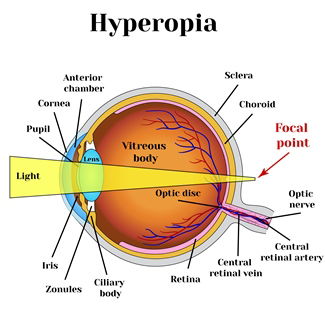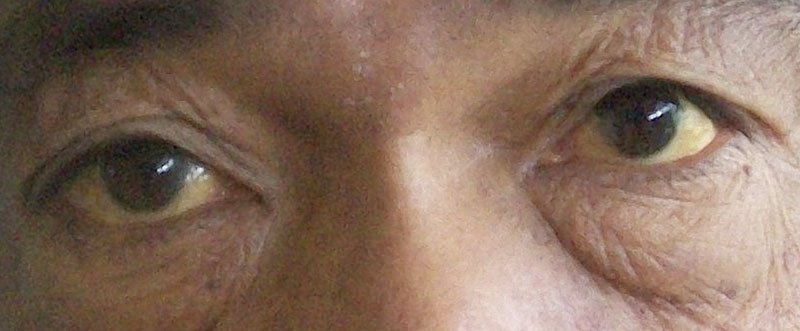Sight is one of our most important senses, and as a parent, it can be frightening to think that your child is at risk of suffering vision impairment of any kind. However, we urge parents not to panic needlessly.
While it is critical to catch any minimal or potential for vision damage early on, there are now more efficient and less invasive treatment options than ever before for a variety of conditions.
Below, we’ve outlined the most common eye conditions found in children, and some of the most effective treatments today’s skilled surgeons and doctors use to correct them.
Astigmatism

Some of the symptoms of astigmatism include eye strain, headaches, and squinting since astigmatism causes blurriness at all distances.
Eyeglasses, contact lenses, and corrective surgery are the most common modern treatments for astigmatism. For some time, contact lenses could not correct this defect, but that’s no longer the case.
Surgeries like LASIK are also very useful for those who don’t want to wear glasses, although the patient needs to be over the age of 18 to qualify for this surgery.
Childhood Epiphora (Tearing)
Excessive tearing, also known as epiphora, can be diagnosed in infancy in many cases. It can also develop later in life. When present in an infant, it is usually a sign of a blocked tear drainage system. This type of epiphora often improves without treatment within the first year of the child’s life.
However, if there is no improvement, there are several treatment options, including eye drops and a tear sac massage.
If these less invasive treatments are ineffective, your physician may suggest surgery which probes the tear drainage system.
There are other more severe causes of childhood epiphora, including pediatric glaucoma and ocular surface disease, which require other treatment plans.
Dry Eyes
Digital eye strain has always been a problem for working adults, but with the widespread use of smartphones and tablets, it is now also a serious issue for children. We don’t blink with the same frequency when we spend a lot of time looking at our screens; the average person blinks every 10 seconds, but we blink far less when using a device.
In turn, we may get digital eye strain and dry eyes which can cause long term damage. However, there are plenty of options for preventing it.
The most effective way to avoid this vision impairment does not even require a doctor: take regular breaks from devices. Set a kitchen timer to remind your kids (and yourself) to step away from their screens every ten to twenty minutes.
However, this may not be enough for those suffering from chronic dry eye. Modern treatments have continued to improve, and there are numerous treatment options:
- Medication: Newly developed medicines like Xiidra can help prevent inflammation in the eyes, and eye drops with lubricin can help keep eyes moist.
- Pulsation Systems: The Lipiflow system uses thermal pulsations to clear the eye’s glands and improve lubrication. It’s a simple outpatient procedure.
- Implantable Eye Drops: While they are not yet available, researchers are working on a system that will automatically allow the slow release of medication over time. This option will be favorable for adults that find eye drops uncomfortable, and parents who dread applying them for their children.
- Intranasal Stimulation: The TrueTear Intranasal Tear Neurostimulator uses energy pulses, delivered to the nose, to encourage a natural increase in tear production.
Hyperopia (Farsightedness)

While some instances of infant and pediatric farsightedness are temporary and outgrown, higher levels of hyperopia can prevent normal visual development and cause permanent visual loss or crossed eyes.
Many children benefit from prescription glasses, but there are also some new solutions:
- Light Changing Inlays: Implanted beneath the cornea in the eye to sharpen one’s vision.
- Eye Training Programs: There are several newly developed “eye training” programs, and apps, like GlassesOff, which research suggests may improve vision over time.
Myopia (Nearsightedness)
Nearsightedness, otherwise known as “myopia,” refers to a condition in which the child can see objects closer to them more clearly than they can see objects that are farther away. Of course, to an extent, most people can usually see closer objects more clearly than those that are far away.
However, myopia becomes more problematic when an individual squints, must hold objects close to their face to see it, or sits very close to televisions or computer screens. It can also contribute to amblyopia (lazy eye).
Myopia is treated very successfully with glasses for small children and with refractive surgeries like LASIK in older teenagers and adults. Also, as with hyperopia, new technological advances like light changing inlays and eye training programs can be beneficial.
Pediatric Cataracts
Cloudiness or opacity of the eye lens is known as a “cataract.” Cataracts can result in blurred vision, depending on their location and size. While we usually associate cataracts with older adults, they can also occur in very young children and even be present at birth.
It is vital to diagnose cataracts in infants and toddlers as early as possible or risk delays in visual development. Symptoms of pediatric cataracts include white areas in the pupil or pupils and/or misalignment of one or both eyes.
If the cataract significantly obstructs the child’s vision or seems to be worsening, treatment may include modern surgery. After surgery, further treatment is often necessary, but technological innovations have made it possible for doctors to make post-op adjustments to the lens, as with the RxSight Light Adjustable lens.
Pediatric Glaucoma
High pressure within the eye is known as glaucoma. This pressure can result in damage to the optic nerve, and as a result, can lead to permanent loss of vision. Pediatric glaucoma is very rare but can occur in newborns or at any point during childhood. Associated symptoms include tearing, blinking, light sensitivity, eye redness, and cloudy corneas.
Several surgical options can help lower the pressure in the eye, including trabeculectomy and goniotomy, both of which open the eye’s drainage canals.
Another option called microinvasive glaucoma surgery was recently developed, as well. It seems to have fewer side effects and causes less trauma to the eye.
There are also promising new drugs, like Vyzulta and Rhopressa.
Pediatric Ptosis
Ptosis refers to the involuntary drooping of the upper eyelid and can occur in both children and adults. Congenital ptosis is noticeable at birth, but non-congenital ptosis can happen at any time of life. The impairment is caused by a weakness of the muscles that raise the upper eyelid.
A “drooping” upper eyelid restricts the light passing through to the retina, causing blurry vision. It can also cause amblyopia (lazy eye) or, if untreated, permanent vision loss.
One of the more noticeable symptoms of ptosis is a “chin up” posture in children, i.e., they raise their chin higher than usual to allow more light into the eye.
If ptosis is significant or progressive, surgery is the preferred treatment.
Retinopathy of Prematurity
Retinopathy of Prematurity (ROP) occurs due to abnormal blood vessel development in infants that are born prematurely. It is not always detected immediately because the initial visual difficulties may be mild.
However, while ROP may spontaneously improve in some infants, it can also be progressive. If so, vision impairment can be severe and may require laser treatment. It’s crucial to address ROP as soon as any symptoms are noted, as it can result in numerous complications including strabismus, myopia, cataracts, or even retinal detachment resulting in blindness. All premature infants should be screened for ROP at birth.
Strabismus
Misalignment of the eyes, also known as strabismus, can take several different forms, including:
- Inward turned eyes (esotropia)
- Outward turned eyes (exotropia)
- Upward turned eyes (hypertropia)
- Downward turned eyes (hypotropia)
Both intermittent and chronic misalignment can be categorized as strabismus. Strabismus can occur at any age—newborn, during childhood, or even in adulthood. Children with strabismus are particularly at risk for amblyopia (lazy eye).
If treatment is not provided early on, children can even have permanent loss of vision. Strabismus in adults can also result in double vision (diplopia).
There are numerous modern treatment options for this impairment, depending on the root cause, including an eye patch, Botox injections, eyeglasses, and surgery.
Early Intervention is Key
The most challenging part of a childhood vision impairment is detecting the problem early on. No matter what symptoms you notice, whether it’s tearing up, runny eyes, squinting, difficulty recognizing objects (near or far away), lazy eye, or any other eye trouble, it’s essential that you schedule an appointment with Eye7 eye hospital near you, as soon as possible and consult our Pediatric Ophthalmologists.
The vast majority of children’s eye conditions can be addressed early on and lead to no, or very minimal, lasting effects, but only if there is early intervention.






